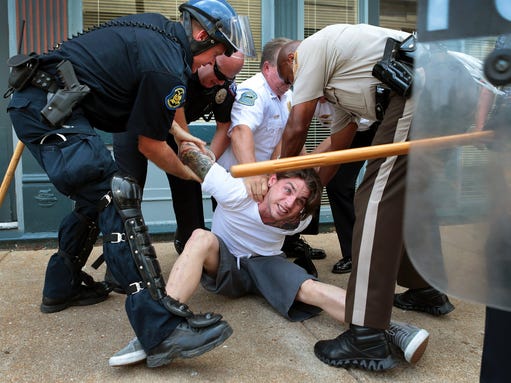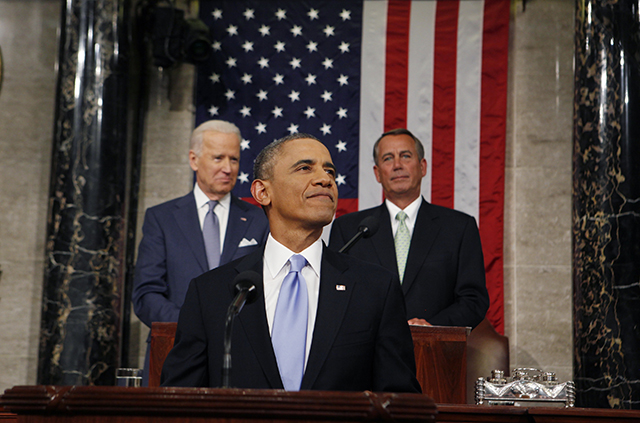
Four white men armed with rifles who arrived early Tuesday at protests in Ferguson, Mo., said they were there to protect journalists, but they were not welcomed by police, who fear their presence could prove "inflammatory" amid demonstrations marking the one-year anniversary of the racially charged police shooting of a black man.
Members of the group "Oath Keepers," an association of current and former soldiers or law enforcement and self-professed guardians of the Constitution, told Reuters they were there to provide protection for journalists from the conservative website Infowars.com. But like the police, the mostly African-American protesters seemed to find their presence provocative.
"I hope some black "oath keepers" show up tonight," read one tweet. Another user tweeted, "If oath keepers were black, they would have been killed by the trigger happy white cops."
Meanwhile, authorities arrested nearly two dozen people during a protest that stretched into early Tuesday, marking the anniversary of the Aug. 9, 2014, fatal shooting of 18-year-old Michael Brown, although there was no repeat of the violence that scarred weekend demonstrations. Police and community leaders are desperately hoping to avoid a replay of the rioting that occurred after Brown was shot and again in November, after a grand jury declined to indict Ferguson Police Officer Darren Wilson.
"Their presence was both unnecessary and inflammatory"
- Jon Belmar, the St. Louis County police chief
On Tuesday, there were no shots fired and no burglaries, looting or property damage during the protest along West Florissant Avenue, St. Louis County police spokesman Shawn McGuire said. That thoroughfare was the focus of months of massive protests and sometimes violent unrest last summer after the killing of Brown by a Ferguson police officer. McGuire said approximately 23 arrests were made, though police were still confirming official totals.Four white men armed with rifles who arrived early Tuesday at protests in Ferguson, Mo., said they were there to protect journalists, but they were not welcomed by police, who fear their presence could prove "inflammatory" amid demonstrations marking the one-year anniversary of the racially charged police shooting of a black man.
Members of the group "Oath Keepers," an association of current and former soldiers or law enforcement and self-professed guardians of the Constitution, told Reuters they were there to provide protection for journalists from the conservative website Infowars.com. But like the police, the mostly African-American protesters seemed to find their presence provocative.
"I hope some black "oath keepers" show up tonight," read one tweet. Another user tweeted, "If oath keepers were black, they would have been killed by the trigger happy white cops."
Meanwhile, authorities arrested nearly two dozen people during a protest that stretched into early Tuesday, marking the anniversary of the Aug. 9, 2014, fatal shooting of 18-year-old Michael Brown, although there was no repeat of the violence that scarred weekend demonstrations. Police and community leaders are desperately hoping to avoid a replay of the rioting that occurred after Brown was shot and again in November, after a grand jury declined to indict Ferguson Police Officer Darren Wilson.
"Their presence was both unnecessary and inflammatory"
- Jon Belmar, the St. Louis County police chief
On Tuesday, there were no shots fired and no burglaries, looting or property damage during the protest along West Florissant Avenue, St. Louis County police spokesman Shawn McGuire said. That thoroughfare was the focus of months of massive protests and sometimes violent unrest last summer after the killing of Brown by a Ferguson police officer. McGuire said approximately 23 arrests were made, though police were still confirming official totals.
















